
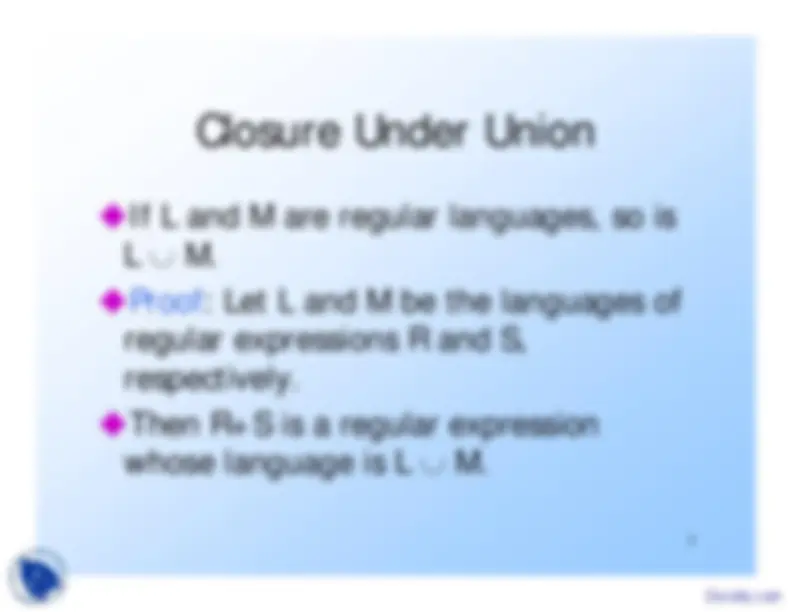
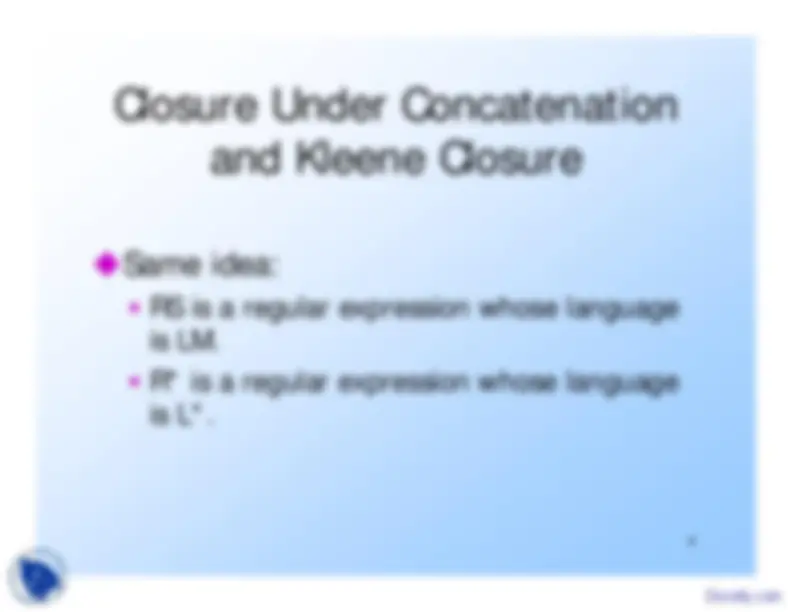
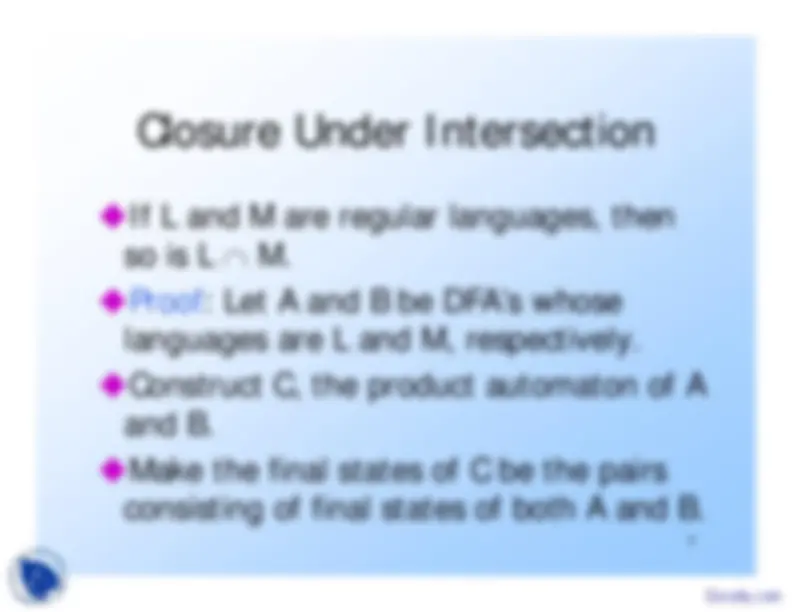
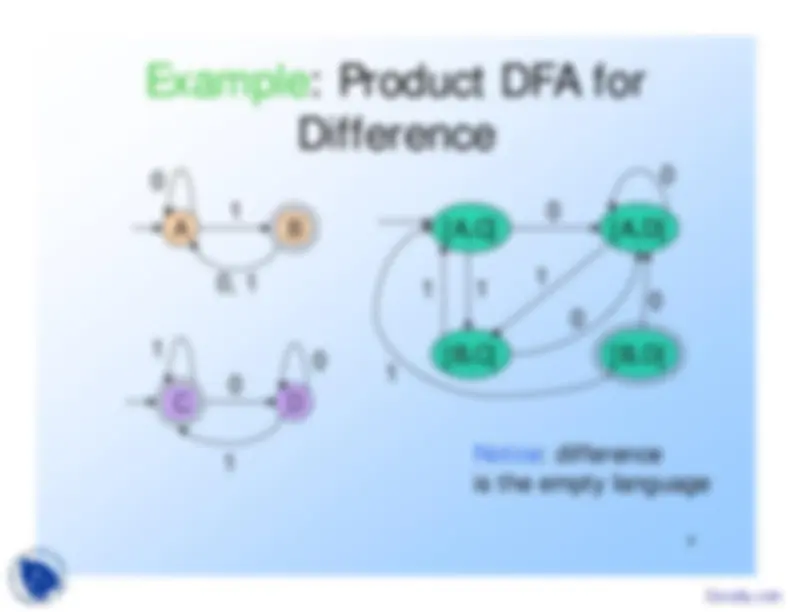
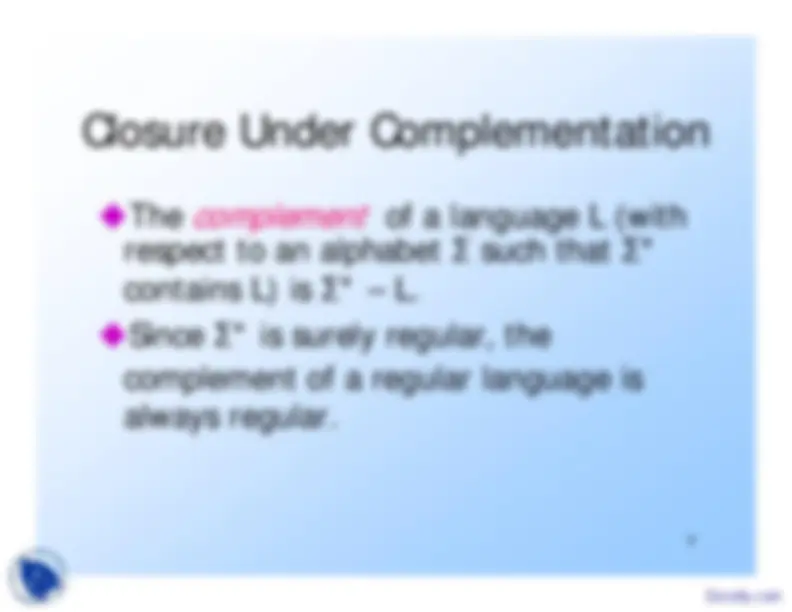
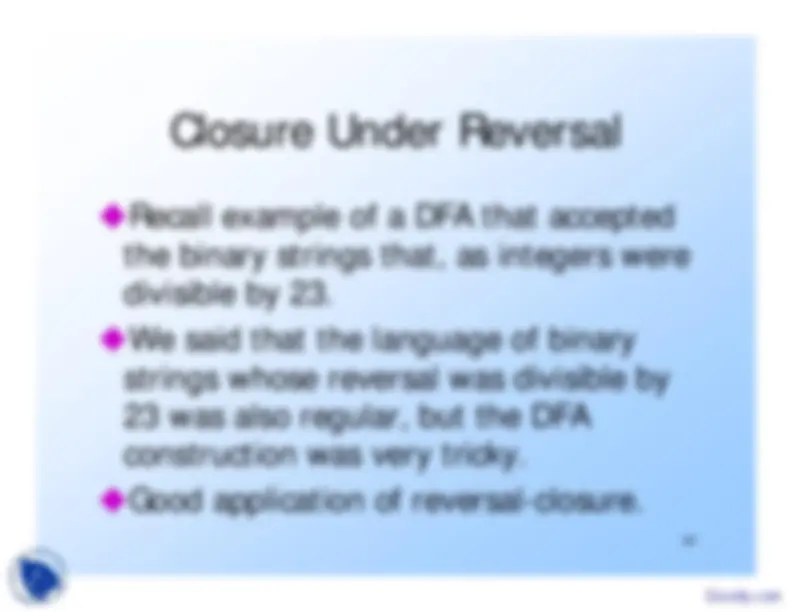
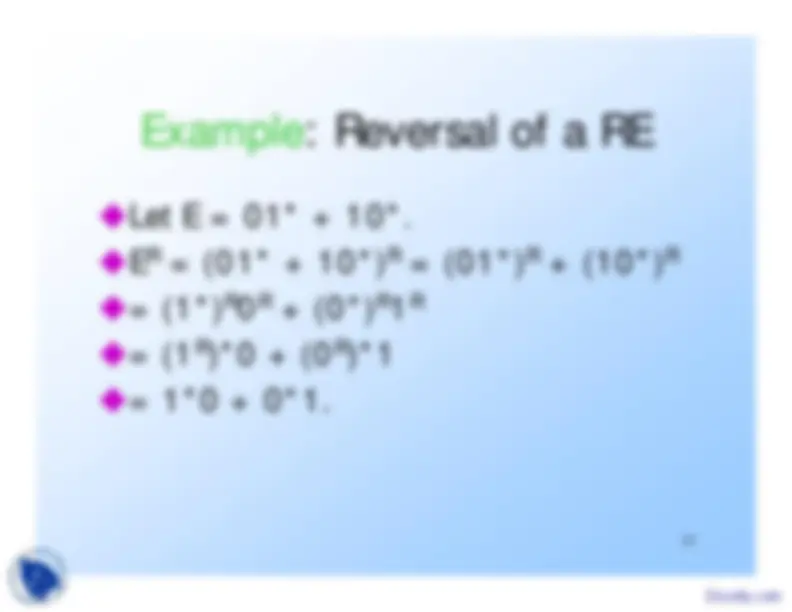
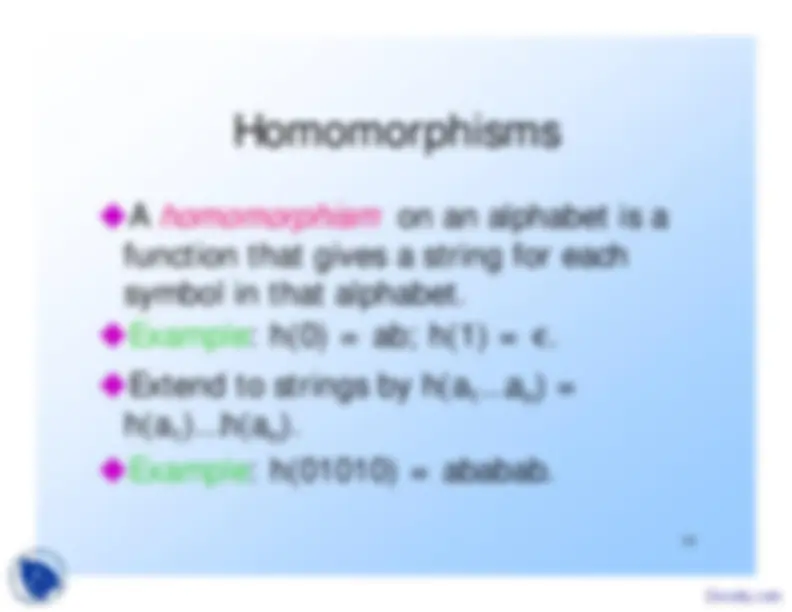
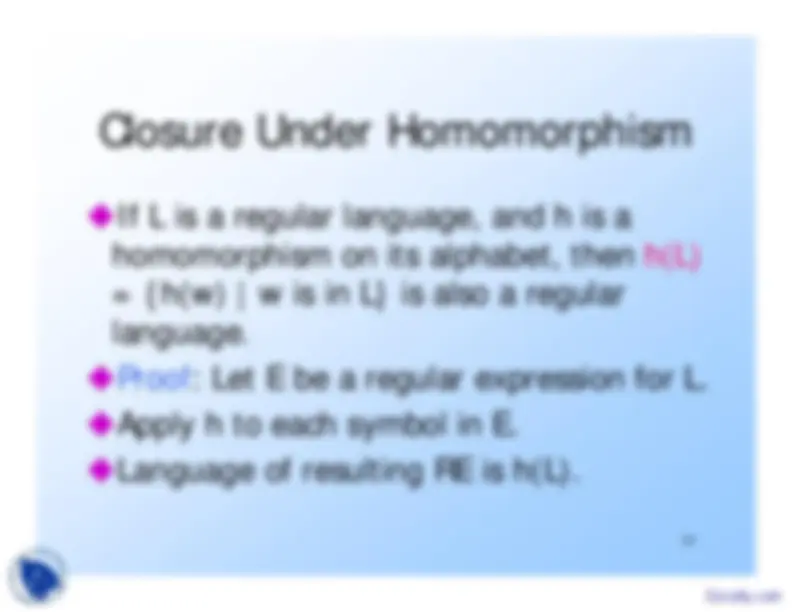
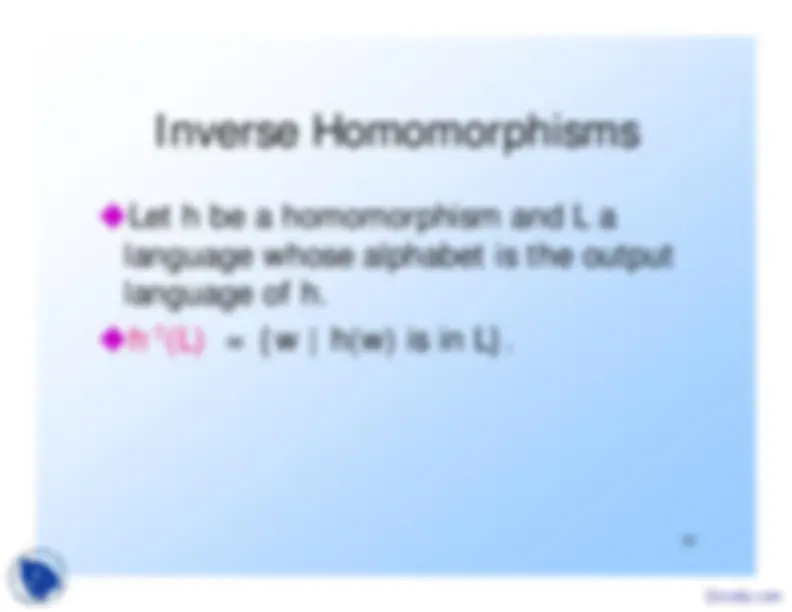
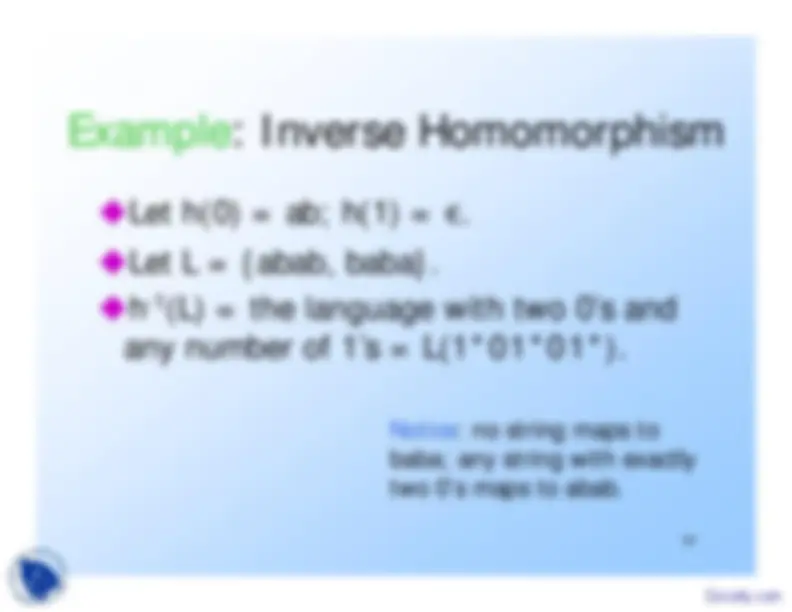
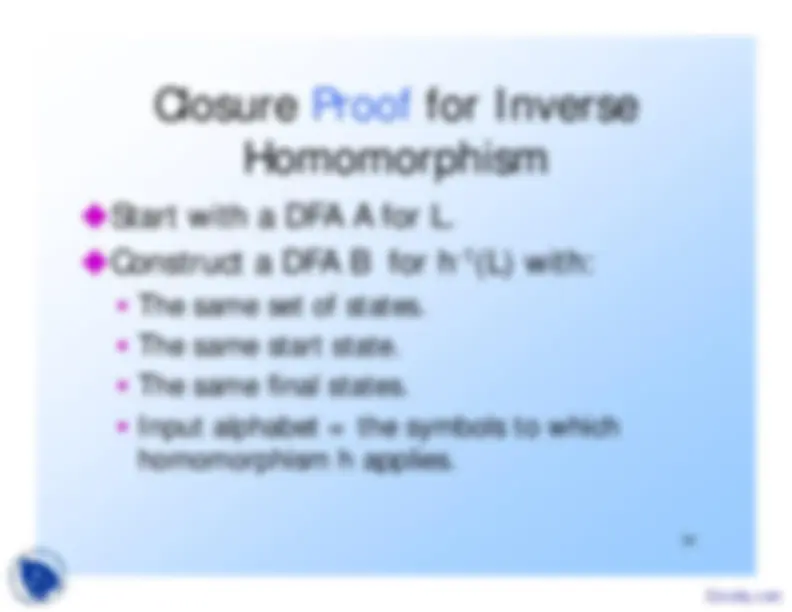
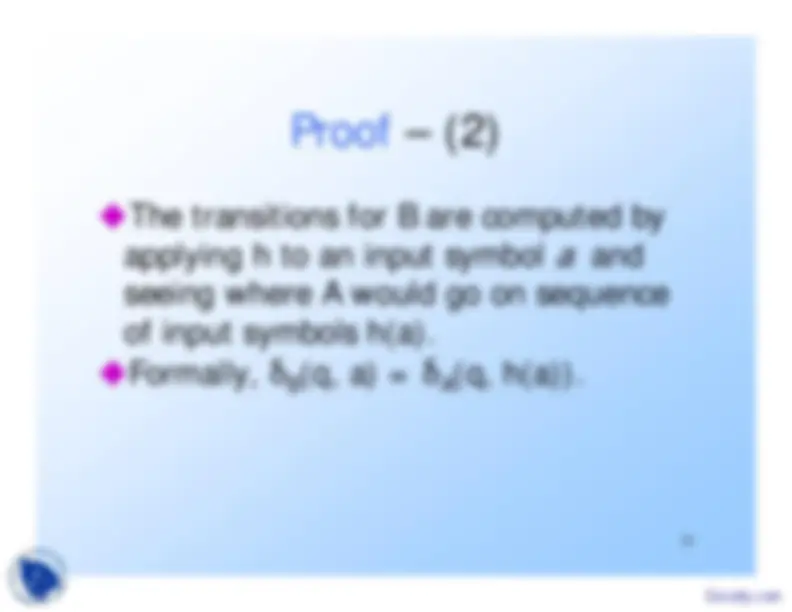
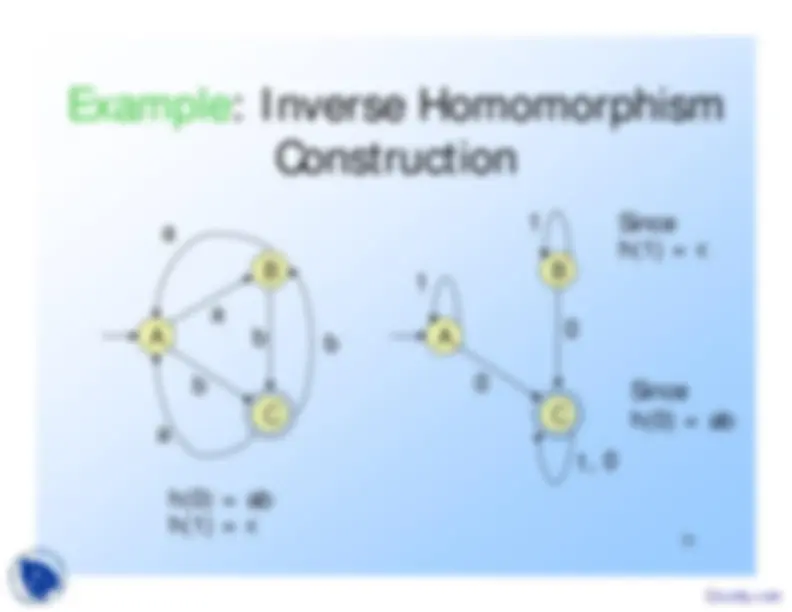
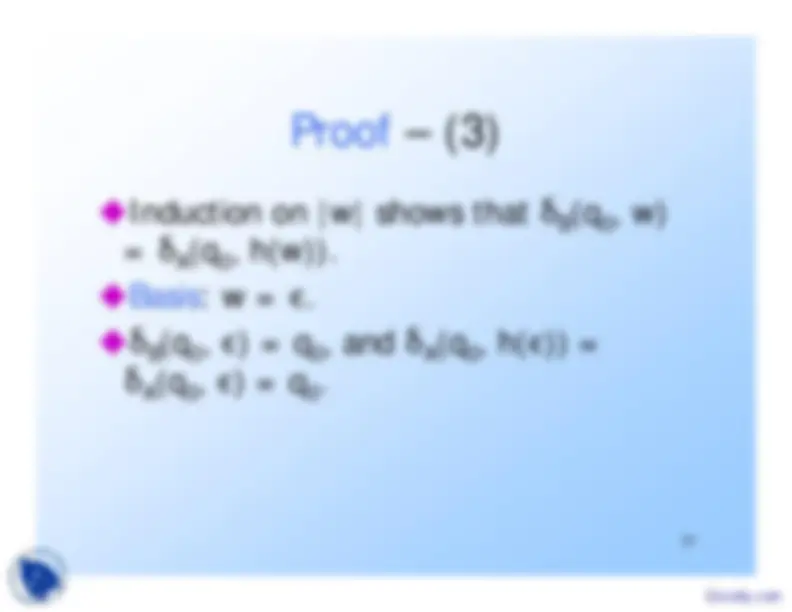
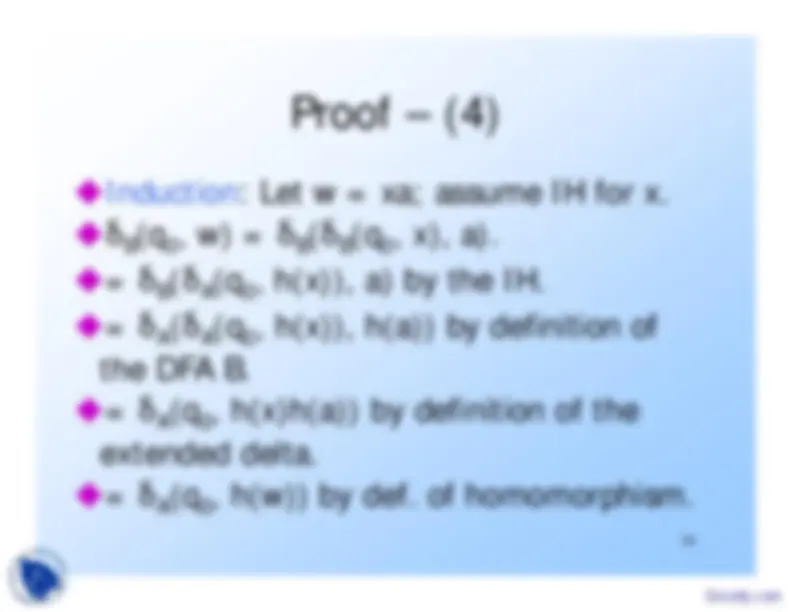


Study with the several resources on Docsity

Earn points by helping other students or get them with a premium plan


Prepare for your exams
Study with the several resources on Docsity

Earn points to download
Earn points by helping other students or get them with a premium plan
Community
Ask the community for help and clear up your study doubts
Discover the best universities in your country according to Docsity users
Free resources
Download our free guides on studying techniques, anxiety management strategies, and thesis advice from Docsity tutors
Some concept of Automata and Complexity Theory are Administrivia, Closure Properties, Context-Free Grammars, Decision Properties, Deterministic Finite Automata, Intractable Problems, More Undecidable Problems. Main points of this lecture are: Closure Properties, Union, Intersection, Difference, Concatenation, Kleene Closure, Homomorphism, Inverse, Closure Property, Operation
Typology: Slides
1 / 24

This page cannot be seen from the preview
Don't miss anything!

















1
Union, Intersection, Difference,Concatenation, Kleene Closure,
Reversal, Homomorphism, Inverse
Homomorphism
2
Recall a closure property is a statement that a certain operation on languages,when applied to languages in a class(e.g., the regular languages), producesa result that is also in that class.
For regular languages, we can use any of its representations to prove a closureproperty.
4
Same idea:
RS is a regular expression whose languageis LM.
R* is a regular expression whose languageis L*.
5
If L and M are regular languages, then so is L
Proof: Let A and B be DFA’s whose languages are L and M, respectively.
Construct C, the product automaton of A and B.
Make the final states of C be the pairs consisting of final states of both A and B.
7
If L and M are regular languages, then so is
= strings in L but not M.
Proof: Let A and B be DFA’s whose languages are L and M, respectively.
Construct C, the product automaton of A and B.
Make the final states of C be the pairs where A-state is final but B-state is not.
8
A C
B D
0
1
0, 1
1
1
0
0
[A,C]
[A,D]
0
[B,C]
1
0
1
0
1
[B,D]
0
1
Notice: differenceis the empty language
10
Recall example of a DFA that accepted the binary strings that, as integers weredivisible by 23.
We said that the language of binary strings whose reversal was divisible by23 was also regular, but the DFAconstruction was very tricky.
Good application of reversal-closure.
11
Given language L, L
R
is the set of strings
whose reversal is in L.
Example: L = {0, 01, 100}; L
R
Proof: Let E be a regular expression for L.
We show how to reverse E, to provide a regular expression E
R
for L
R
13
Let E =
R
R
R
R
R
R
R
R
R
R
14
on an alphabet is a
function that gives a string for eachsymbol in that alphabet.
Example: h(0) = ab; h(1) =
ε
Extend to strings by h(a
1
…a
n
h(a
1
)…h(a
n
Example: h(01010) = ababab.
16
Let h(0) = ab; h(1) =
ε
Let L be the language of regular expression
Then h(L) is the language of regular expression
ab
ε
ε
ab
Note: use parenthesesto enforce the propergrouping.
17
ab
ε
ε
ab
)* can be simplified.
ε
ε
, so
ab
ε
ab
ε
ε
is the identity under concatenation.
That is,
ε
E = E
ε
= E for any RE
E.
Thus,
ab
ε
ε
ab
ab
ε
ε
ab
ab
ab
Finally, L(
ab
) is contained in L((
ab
so a RE for h(L) is (
ab
19
Let h(0) = ab; h(1) =
ε
Let L = {abab, baba}.
h
(L) = the language with two 0’s and
any number of 1’s = L(
Notice: no string maps tobaba; any string with exactlytwo 0’s maps to abab.
20
Start with a DFA A for L.
Construct a DFA B
for h
(L) with:
The same set of states.
The same start state.
The same final states.
Input alphabet = the symbols to whichhomomorphism h applies.